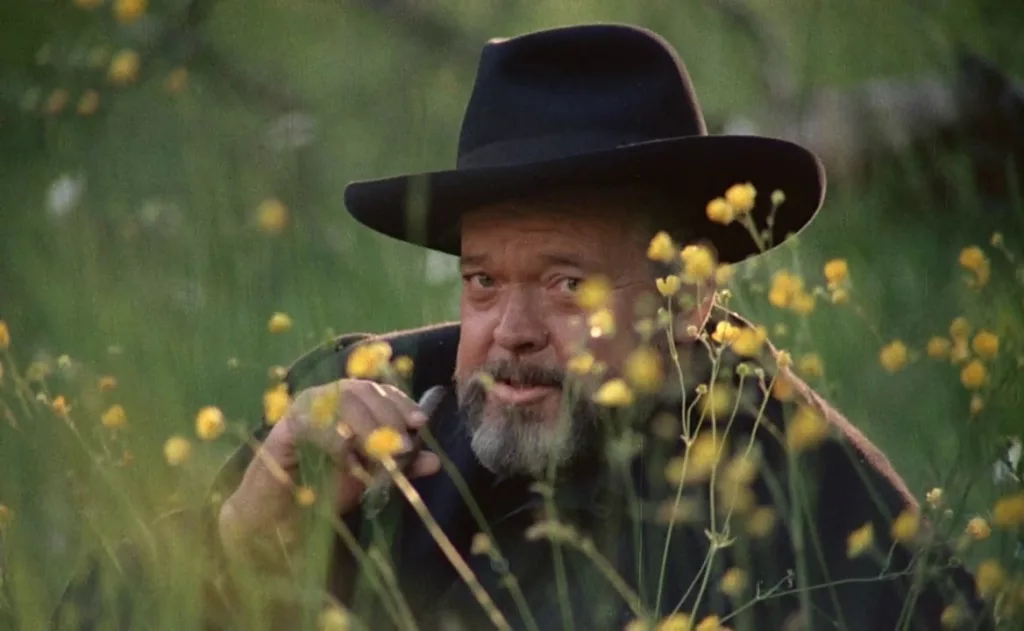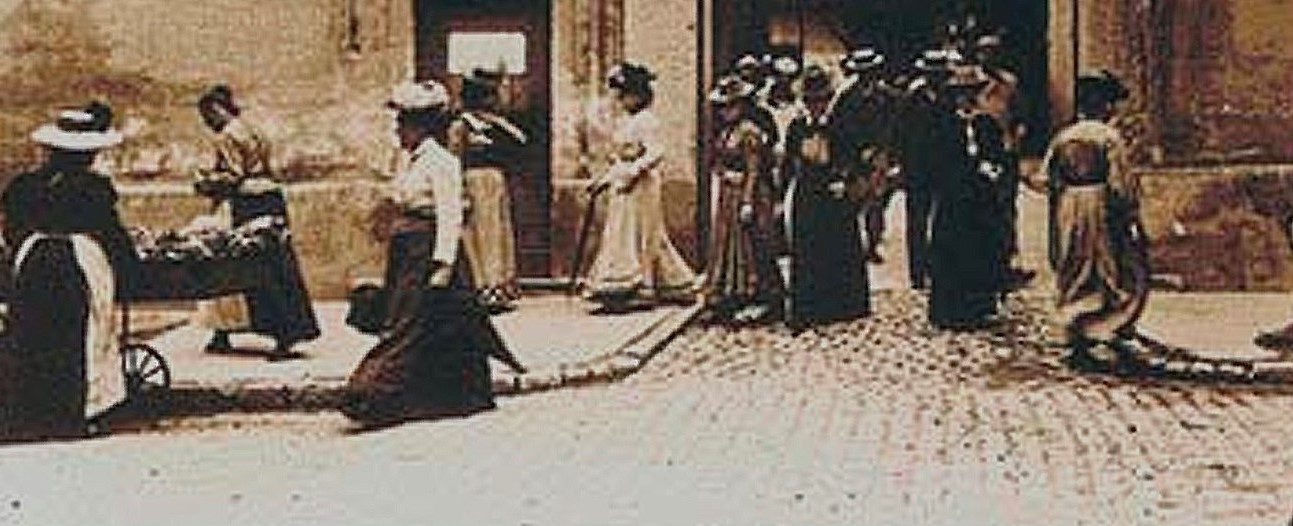France, 1973
Directed by Orson Welles
With Orson Welles (Himself), Oja Kodar (Herself), Elmyr De Hory (Himself), Clifford Irving (Himself)

Director Orson Welles, more rakish and mesmerizing than ever, stands on a railway platform talking to a couple of children and playing magician’s tricks to charm them, including that old trick of pulling a nice big rabbit out of nowhere. The camera focuses on his hands, his well-known face, and one of the kids. But shots also show this camera and its crew doing their work.
This apparent documentary does not only report on a particular topic but captures its own making and pays as much attention to the characters as to the filmmaker. An essential and recurring image shows Welles sitting awkwardly in an editing room, surrounded by shelves bursting with reels, his fingers ready to push buttons and to cut the celluloid films, good-humoredly talking to the camera. Narrative and narration are both staged in a candid and playful manner till the end.
Montage is the key stylistic feature of “F for Fake”, which looks like for the most part a jumble of shots making the characters responding to each other’s words and moves or adding constantly fresh perspectives. This is primarily an investigation on Elmyr De Hory, a Hungarian-born painter who became famous in the early 1970s for the impressive number of forged paintings by great masters he managed to sell in the art market and to put in the museums. His career as a forger had just been exposed, with his agreement, by American novelist Clifford Irving, who had been accused of writing a fake of his own, purportedly narrating the life of American businessman Howard Hughes who put briefly aside his reclusive habit to condemn the book. De Hory used to live in the United States but fled to Ibiza, where he befriended a lot of people, including Irving and most shots were taken on the Spanish island. But the movie also goes to the US, including on a search for Hughes’ fate.
A conclusion of sorts is centered on Oja Kodar, the Croatian actress and screenwriter who has been Welles’ partner for some time (and would be until his death). She talks about her own experience in art forgery, a tale involving both her grandfather and Pablo Picasso. Shot in part in studio and told with a dazzling blend of provocative shots of Kodar and file pictures of the Spanish painter, it feels an odd complement of the previous developments of this most meandering and eccentric film – and then is claimed not to be another puzzling truth but in fact a clever lie by Welles.
The cineaste recites at one point a Rudyard Kipling’s poem and it seems that indeed the underlying logic of his film is based on “The Conundrum of Workshop”, which features the Devil repeatedly wondering after different ventures made by men, starting with Adam, whether these creations are really what should be called art. The outlandish life of De Hory raises a similarly awkward question, for whenever the genuine character of a work of art is proven false, the process of reevaluation forces us to ask what a work of art really is, indeed, and by extension our social values.
The personal, mind-boggling, self-referential process Welles has created while making his inquiry enables him to widen the reflection to moving images (the film includes a candid camera montage, ironically emphasizing typical macho reactions to Kodar’s charm and allure, including a leering gaze of Picasso) and popular culture (the mystery around Hughes’ life and the media obsession with those kinds of celebrities) while freely commenting on a range of topic, from the Chartres cathedral to the ups and downs of his career, which happens to include a famous great fake, a live radio report on an alien invasion, in fact playing as a radio drama Herbert George Welles’ book “War of the Worlds”.
Welles carefully calculates the weight of his visual effects and provocative statements in order to elicit an amused but informed response to an essential question. However, there is the impression he enjoys himself too much in the making; the movie has a touch of self-satisfaction that tires a bit, or clearly irks. First reactions to what turned out to be his last full film were negative; the critics and the audience considered it a non-sense and a show of egotism. Such a reception is understandable but it ignores the sheer originality and media cleverness of the film, which puts it in a league of its own.
And it also looks like a fitting addition, and alas a fitting conclusion since Welles would not manage to wrap up another feature production after “F for Fake”, to a cinematic career which has been largely shaped by a pressing and provocative, inventive and impressive, analysis of the thin lines between truths and lies and of the way a man’s life defies analysis, as making out what is genuine and what is mendacious proves to be a hard and exhausting task – his portrayal of businessmen illustrates memorably, with stylistic chutzpah and creativity, the complexity of grasping what lies behind the manufactured myth and what nurtures the quest for power, be it the celebrated “Citizen Kane” of 1941 or the baffling “Confidential Report” (or “Mr. Arkadin”) of 1955 (no wonder then that Hughes gets in the cross hair of Welles’ critical mind, which has been so intrigued by the American figure of the business tycoon).

